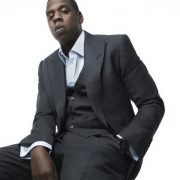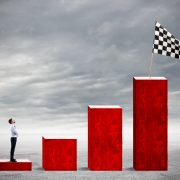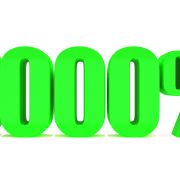Optimism, how perfectly human. It’s the attitude that tomorrow will be better, and that the outcome of a specific endeavor, or outcomes in general, can be positive and desirable. But there’s also pessimism, the anticipation of undesirable outcomes from a given situation. Perhaps Voltaire was thinking of both extremes in his classic novella Candide, when he wrote “If this is the best of possible worlds, what then are the others?”
Pessimism and optimism display themselves in economics, irrespective of whether you believe it is a science or not. Pessimists dismiss economics as the dismal science. Thomas Carlyle coined the term, and said economics was dismal in “finding the secret of the Universe in “supply and demand”, and reducing the duty of human governors to that of letting men alone”.
The optimists say that “letting men alone” is the whole point. They embrace economics as the science of human achievement, the science of life. In supply and demand terms, optimists are the supply siders and pessimists are the demand siders. Optimists favor free markets, have faith in individuals, get excited about the future, and in times of crisis: stay out of the way. Pessimists get excited about catastrophe because it gives them the chance to intervene to fix things. Never letting a crisis go to waste means confiscate, spend, and grow power.
Spontaneous Order Versus Crisis Management.
The difference between the two sides can be summed up as spontaneous order versus crisis management. As social researcher Peter Saunders explains:
Nobody planned the global capitalist system, nobody runs it, and nobody really comprehends it. This particularly offends intellectuals, for capitalism renders them redundant. It gets on perfectly well without them.
The crisis management folks remain nonplussed. They refuse to acknowledge spontaneous order or the sheer complexity of economic systems. So who’s right?
A great place to observe economic complexity is the financial markets. There are historical data sets available that detail trillions of transactions effected by millions of people. Financial scientists have analyzed the data and their groundbreaking research has earned Nobel Prize recognition. We now know the research as Modern Portfolio Theory, the Capital Asset Pricing Model, and the Efficient Market Hypothesis. These theories embrace the spontaneous order idea that all the information in markets is embedded in prices, and that analysis of prices and price trends and price relationships can point to where value creation will occur. Understanding markets comes from such analyses.
Traditional investment managers however were skeptical; they didn’t buy the efficient market theory. They are stock pickers after all; their job is to find value in so-called mispriced assets, and outsmart the market’s perceived inefficiencies. If they bought in to efficient market theories, it would render them redundant. Their value is their forecasting acumen and company research. They present themselves as smart guys and gals delivering an information advantage to their clients, as they are expected to do. And for those that do it well, it works a little more than half the time, hopefully net of fees.
Entrepreneurial Initiative Tests Who’s Right.
To prove their point, some of the academic researchers decided to put their spontaneous order theories to the test. They became entrepreneurs. They tested their ideas in the real world of competition, transactions, and liquidity. They created an investment company and deployed real capital from real investors in real time. Competitive pressure would mean relentless scrutiny; success and failure would be rewarded accordingly. They were successful – business was good, very good. The industry was finally forced to sit up and take notice. Many firms have since introduced similar strategies known as smart beta and factor based investing. The optimists were proven right in the marketplace, and consumers won via greater choice and lower prices for investment services.
These innovative analysts were focused on the price mechanism, not forecasts. They knew that everything worth knowing about a stock is built in to its price. The goal is to identify the dimensions of return that are baked into financial markets, that can be easily harnessed, and get out of the way. They don’t waste money making predictions or buying advertising. They are advocates for complexity and its spontaneous order. Here economist Donald Boudreaux compares complex economies to the natural world:
The same wisdom that guides our understanding of biology all too often abandons us when we contemplate the economy. Attempts to intervene into market economies are very much like humans’ attempts to fly by dressing like birds and flapping fake wings.
Pessimists Beg To Differ.
Yet pessimists refuse to permit the free operation of markets. They regard free people trading value for value, and their resulting prosperity, as materialism and greed. Like Carlyle, they see an undesirable outcome: plunder scammed from the disadvantaged. Redistribution is their moral undertaking. They promote the pessimistic idea that the future would be catastrophic without their wise intervention. But their real fear is being rendered redundant. There is no place for them in the optimistic world of spontaneous order.Their economist with the loudest megaphone is Paul Krugman. To him, if all-out war is necessary to stimulate demand, so be it. We “needed Hitler and Hirohito” to get us out of depression, he said. Talk about a dismal science.
On the bright side, economist Brian Wesbury reminds us that optimists are concerned with what people can produce, how inventions raise productivity, and how the world works. And as economist Friedrich Hayek observes about human betterment, “society arose through the discovery that men can live together in peace and mutually benefiting each other without agreeing on the particular aims which they severally pursue.” The optimist only asks, just please get out of our way.













